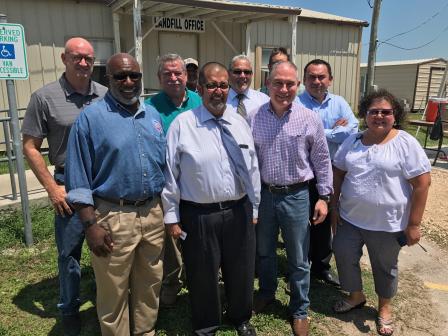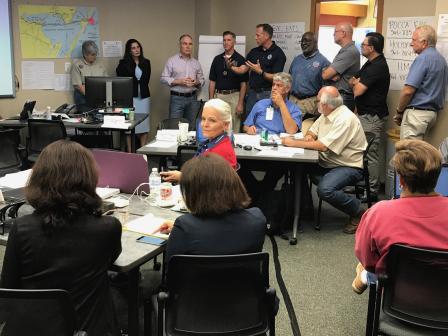News Releases from Headquarters
Administrator Pruitt Meets With Hurricane Harvey Responders and Officials in Texas
Corpus Christi, Texas — U.S. Environmental Protection Agency (EPA) Administrator Scott Pruitt traveled to Corpus Christi today to assess EPA relief efforts and thank responders. Administrator Pruitt also met with local and state leaders to discuss continued relief measures in the aftermath of Hurricane Harvey.
“The devastation endured by Texas this week is unfathomable. As I saw firsthand today, the Lone Star State has shown commendable perseverance in helping their fellow neighbors through this crisis,” said Administrator Pruitt. “EPA is committed to working with our federal, state, and local partners to provide relief to the affected regions."
EPA has an organized emergency response program and is positioned to support FEMA, state, local and tribal partners. EPA Headquarters’ Emergency Operations Center (EOC) has been activated and Administrator Pruitt is in regular contact with EPA staff across the Agency who are part of the hurricane response effort. Helping manage response efforts and focusing on the safety of those affected are the Agency's highest priorities.
EPA supports hurricane preparedness and response in a number of ways, including:
-
Addressing Fuel Shortages: The Clear Air Act allows EPA Administrator Pruitt, in consultation with Energy Secretary Perry, to waive certain fuel requirements to address shortages that occur as a result of the storm. If Administrator Pruitt determines that extreme and unusual fuel supply circumstances exist in a state or region as a result of the hurricane, a temporary waiver can help ensure an adequate supply of gasoline is available in the affected area, particularly for emergency vehicles. EPA has an experienced team standing by to expedite handling of fuel waiver requests by the states.
-
Monitoring Public Water Systems: Water systems can be severely impacted during hurricanes due to storm surge, flooding, or loss of power. EPA Region 6 has developed a tracking system for us to identify systems in the storm’s pathway. Over 4,000 public drinking water systems have been potentially impacted by hurricane Harvey and flooding in Texas. Both Texas Commission on Environmental Quality (TCEQ) and Louisiana Department of Hospitals have uploaded their potentially impacted systems into Response Manager, which enables planning for rapid assessments to restore water systems after the flood waters recede. EPA and TCEQ are conducting damage assessments of both drinking water and wastewater systems to identify impacts to critical assets and assist in the recovery.
-
Securing Superfund Sites: EPA assesses conditions at the NPL Superfund sites in the storm’s impact area and tasks each Superfund National Priorities List (NPL) remedial site manager to assess conditions and make on-site preparations for high winds and heavy rainfall. Any on-site activities at sites located in the storm’s path are ceased until the all clear is given and on-site equipment is secured. In addition, freeboard for lagoons or ponds is increased to accommodate forecasted rainfall if possible. Today, EPA began rapid assessments at two sites that are accessible after floodwaters have receded and this work will continue.
- Assessing Conditions at Major Industrial Facilities: EPA assesses conditions at the major industrial facilities in the affected area to identify potential impacts and countermeasures. Following the storm and receding floodwaters, spills and releases are reported to the National Response Center. NRC notifies U.S. Coast Guard or EPA based on preapproved jurisdiction boundaries. EPA conducts follow up inspections and damage assessments in response to reports within EPA jurisdiction.



